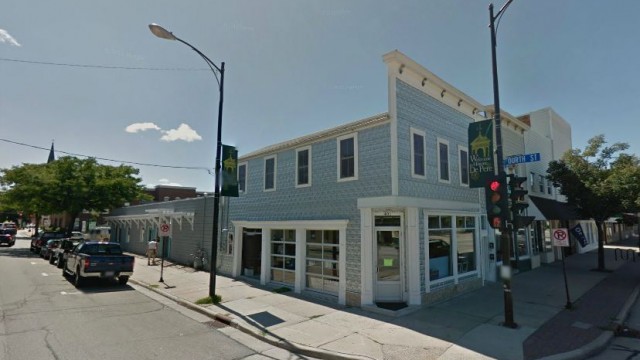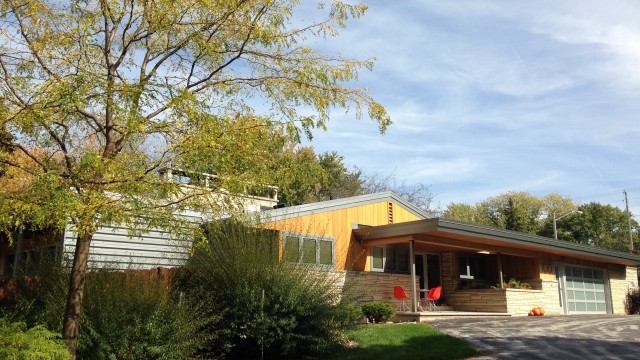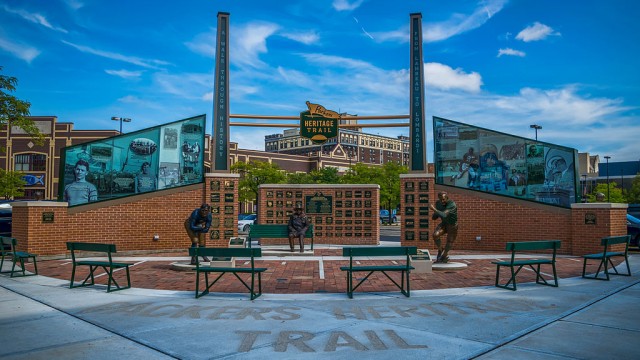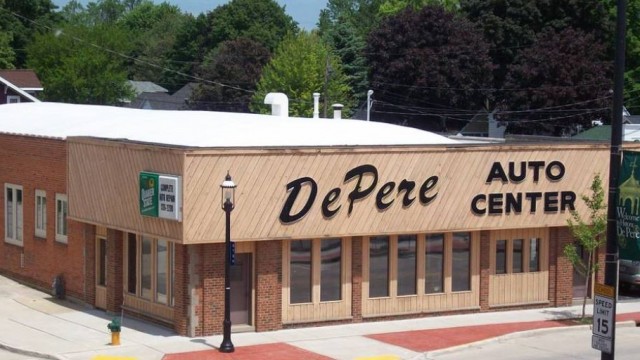Each year the Historic Preservation Committee of the Brown County Historical Society presents awards to businesses, organizations and individuals for their efforts to preserve, restore, and adapt for reuse, vintage and historic buildings in Brown County. These awards are presented at the Society’s annual meeting each February.
The following is a listing of the 2013 recipients of the BCHS Historic Preservation Awards:
S.A.L.T. Restaurant, De Pere
Since it was built in the late 1800s, the building at the corner of Main and 4th Streets in De Pere has served as a tavern, with more notable neames including McCarthy’s and Knights on Main. Later, and addition was built to the south to house a laundromat. Around 2010, Will Schlies purchased the bar and teamed with local contractor Pat Drury to restore the building. Using a photo of the original back bar and Pat’s access to recycled historic building artifacts, they did a historic reproduction of the tavern. Soon thereafter, Will partnered with Ben Raupp and Matt Layden to conver the laundromat in to an attached restaurant. Once again, Pat was asked to performt he work and provide architectural artifacts to give the space it’s unique and inviting atmosphere. S.A.L.T. uses products from local farmers and artisanal beer, sausage, and cheese makers to produce memorable comfort food in a period of architectural setting for a fine dining experience. Photo courtesy of Jerry Abitz
McLean Residence, Allouez
After World War II, architectural influences from the International and Bauhaus movements in Europe and notable work of Brazilian and Scandinavian architects, mixed with styles develped by American architects such as Mies van der Rohe and Frank Lloyd Wright, all combined to advance the aesthetic of Mid-Century Modern. The style, noted for its clean simplicity and integration with nature, used open floor plans and ample windoes (enabled by the replacement of bulky support walks with post and beam construction) to bring the outdoors in. With its beginnings in California, the east coast, and Chicago, the style soon spread across the country. In 1957, Green Bay architect John Nichols incorporated this Mid-Century Modern Ranch style in a house designed for local attorney Merrill Rogoff. Nearly 50 yars later, however, the house was showing it’s age. At this same time, Tamara and Steve McLean had already developed a love for the retro architecture and furnishings of this style, and when they saw this house on the market 8 years ago, they jumped on it. First order of business was to remove the heavy light-blocking curtains that darkened th interior. They replaced all of the original Pella windows with new energy-efficient Pellas of the same style, and reshingled the roof. The mahogany siding was stripped and refinished while the mahogany soffit boards were reveresed to show the original unfinished face. After painting the bedroom and lower level with colors accurate to the period, the replaced all the lighting with period fixtures and furnished the living and dining rooms with Eames style period furniture. The house is a delightful example of an architectural movement that is becoming more and more recognized as a style to be appreciated and preserved. Photo courtesy of the McLean family.
Packers Heritage Trail, Green Bay
Since their inception in 1919, the Packers have been an important part of the City of Green Bay, but it ties to specific places were scattered in lore and various general histories. After researching Packers history for many years, Green Bay native and former Packer sportwriter Cliff Cristl realized that there were many buildings in the Green Bay area, particularly downtown, with a rich and colorful history associated with the Packers. Afte writing an article about the subject for the 2009 Packers yearbook, Cliff thought it would be great to do something downtown as a tourist attraction. Patterned after Boston’s popular Freedom Trail, the Packers Heritage Trail promotes Green Bay’s downtown by connecting the Packers to the community through its buildings and sites. With a series of 22 informal plaques, the trail serves as a thematic tour of Packers history as seen though the area’s architecture. In addition to the downtown walking tour, side spurs take visitors to the Green Bay packing plant area and also through Allouez to De Pere. The tour does a wonderful job of telling the history of the Packers through the area’s historic buildings and sites, and serves as a strong emotional tool for the preservation of these links to the Packer’s past. Photo courtesy of Packers Heritage Trail.
De Pere Auto, De Pere
This little corner of De Pere has been devoted to automobiles for nearly 90 years, starting with the De Pere Motor Company Ford dealership in 1927. It then became a Chrysler dealership, the Cuene Buick, and then a Goodyear store. In 1976, Larry Fisette bought the tire business and started De Pere Auto Center, which soon gained a reputation for quality usd car sales and reliable auto repair. Larry also developed a side business in classic auto restorations. The expanding businesses required additional space, and adjoining houses to the north were purchased, one of which was restored as an officed, and the detatched garage used for body painting and later storage. Larry’s sons, who now share in the business, occupy two of these acquired houses.To accommodate the growing auto body work, De Pere Auto purchased and renovated the Deep Rock service station a block to the west. Larry’s most recent preservation work included restoration of the original dealership building’s main showroom, which enables Larry to to display his growing collection of auto related artifacts. A visit to De Pere Auto is a step back in time, as much for the old fashioned friendly service as it is for the buildings and artifacts of a past era of automobiling. Photo courtesy of the Fisette family.




